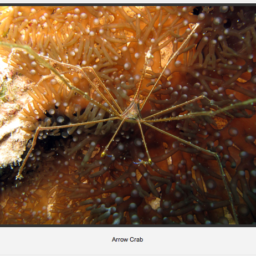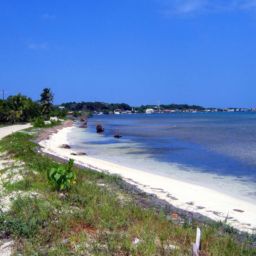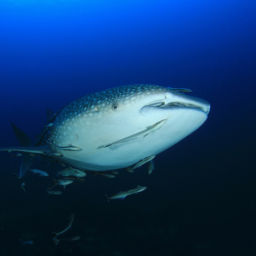Utila may be the smallest of Honduras’ three major Bay Islands, but its diminutive size only enhances its Caribbean charm. Reached by ferry or puddle jumper from the mainland, Utila appears on the horizon like a diver’s utopia, an island of sunbaked alleyways and arching mango trees surrounded by waters so still and turquoise that they seem to have been carved from precious stone. Populated by friendly local Hondurans and weathered backpackers with salt-laden dreadlocks and sandy bare feet, Utila is the very picture of ‘island life.’ Strains of laid-back reggae emanate from the ramshackle dive centers and beach bars that line the island’s only main street. The ocean laps at the shoreline, and in places the reef starts just a few feet from the shore.
I volunteered for a short time at the Whale Shark And Oceanic Research Centre, and as a result got to explore many of the beautiful reefs and walls that surround the island. I was captivated by the colors of the corals, by the shoals of teeming fish that flowed over and around them and by the myriad tiny swim-throughs and blossoming coral bommies. Perhaps my favorite dive during my time in Utila, however, was the Halliburton wreck, an impressively intact cargo ship sunk intentionally in 1998 to provide the island with an exemplary wreck site.
The Halliburton wreck is a special dive for several reasons, firstly for its near-pristine condition. The wreck lies in 100 feet of water, making it as deep as it is long. Unlike many accidental shipwrecks, the Halliburton lies perfectly upright on the sand. The wreck is so precisely positioned on the ocean floor that it seems to look much as it did in its heyday. It is wonderfully intact, from the hull that rises in a sheer wall of steel to the cavernous cargo hold and the wheelhouse that acts as a nursery for a thick cloud of silvery fish fry. The Halliburton wreck also offers an opportunity for easy wreck penetrations, making it an ideal site for divers to complete their wreck specialty course.
On the day that I visited the Halliburton for the first time, the visibility was over 100 feet, which is normal for Utila. As we started our descent, I experienced a few moments of that dizzying vertigo that’s a symptom of amazingly clear water, feeling as though I’d just dropped into the world’s largest aquarium. Descending down through foot after foot of crystal-clear water, we were surrounded by inquisitive shoals of snapper and fusiliers. Through the bubbles of the diver below me, the looming outline of the wreck was immediately visible; as we got closer, the shadows arranged themselves into the clean lines and sweeping deck of the Halliburton. The wreck is at that magical stage where it hasn’t been in the water long enough for the ocean’s corrosive power to take significant hold, yet there has been plenty of time for substantial coral growth to decorate its original form. The wreck is also a great size for a thorough exploration in a single dive without having to repeat sections. We descended into the cargo hold and made our way through the body of the ship, up a coral-encrusted stairway and onto the first deck, and through a tight hatch onto the second. We peered out at the blue ocean through algae-softened port holes, came face-to-face with a giant green moray, and searched for tiny shrimp and crabs in the recesses of the wreck’s belly. A beautiful spotted eagle ray glided serenely past the hull, and we watched from the deck rails like passengers on the Titanic waving goodbye to Southampton.
The wheelhouse at the very top of the ship was my favorite for the fish fry that surrounded us like an underwater snowstorm, and for the plaque underneath the wheel that read ‘”Jesus Was A Pirate.” Dive professionals on Utila have a tradition of leaving objects as tribute to the Halliburton, and the wheelhouse is adorned with strange knickknacks left by past visitors. Through the curtains of baby fish, we spotted the silhouette of a large dog snapper just before we began our ascent. Our escort back to the sunny world above the waves was a shoal of shimmering, iridescent blue runners. It was a spectacular dive, and one of the most enriching wreck experiences I’ve had. For those who are planning a trip to Utila, make time to visit the Halliburton wreck, whether for training purposes or simply for the sheer joy of discovering it for yourself.




